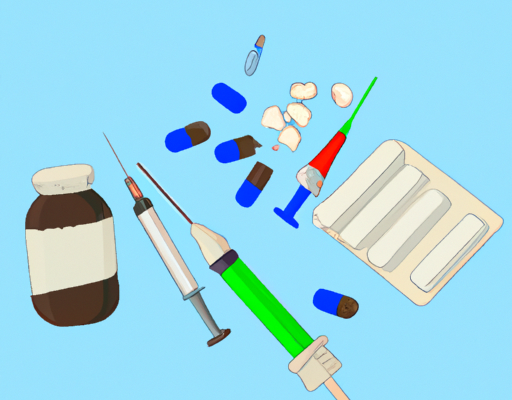Diabetes Definition
Diabetes is a chronic medical condition that occurs when the body cannot regulate its blood sugar levels. It is a serious health issue that can lead to a wide range of potential complications, including heart disease, stroke, blindness, and kidney failure. The symptoms of diabetes include increased thirst and urination, fatigue, blurred vision, and weight loss. The main types of diabetes are type 1, type 2, and gestational diabetes.
- Type 1 diabetes is an autoimmune disorder where the body’s immune system attacks and destroys the cells in the pancreas that make insulin.
- Type 2 diabetes is caused by the body’s inability to use insulin properly, leading to elevated blood sugar levels.
- Gestational diabetes is a form of diabetes that occurs during pregnancy and usually resolves after childbirth.
Diabetes can be managed with lifestyle changes, such as diet and exercise, as well as medication. It is important to monitor blood sugar levels and consult a doctor if any symptoms occur. With proper management, diabetes can be kept under control and complications can be avoided.
Types of Diabetes
Diabetes is a life-altering chronic health condition that affects millions of people around the world. It is characterized by a deficiency in the body’s ability to produce or utilize insulin correctly, leading to high levels of glucose in the blood. Diabetes can be broadly divided into two distinct types: Type 1 Diabetes, which is an autoimmune disorder characterized by the destruction of the insulin producing Beta cells in the pancreas; and Type 2 Diabetes, which is associated with poor lifestyle choices and insulin resistance. No matter the kind of diabetes, it can be managed with careful monitoring and lifestyle modifications like diet, exercise and stress reduction. It is important to note that while diabetes is a chronic health condition, it can be managed with careful attention and proper medical advice.
Definition of Type 1 Diabetes
Type 1 Diabetes is a chronic health condition characterized by the body’s inability to produce enough insulin, a hormone that helps regulate blood sugar levels in the body. With Type 1 Diabetes, the body’s own immune system attacks and destroys the beta cells in the pancreas that produce insulin, leading to elevated blood sugar levels. Type 1 Diabetes is typically diagnosed in childhood or adolescence, and it is important for those living with it to carefully monitor their blood sugar levels and take prescribed medications to manage their condition. Without proper management, Type 1 Diabetes can lead to an array of health complications, including heart disease, stroke, kidney damage, blindness, and nerve and foot damage. Living with Type 1 Diabetes requires a commitment to healthy lifestyle choices, including a balanced diet, regular physical activity, and stress management.
Definition of Type 2 Diabetes
Type 2 diabetes is a metabolic disorder characterized by the body’s inability to properly use and store glucose, leading to high levels of glucose in the blood. It usually develops when the body fails to produce enough insulin or the insulin produced does not work properly. It is the most common type of diabetes and affects millions of people around the world. The risk of developing type 2 diabetes increases with age, but it can also occur in younger adults, particularly those who are overweight or have a family history of the disease. Symptoms of type 2 diabetes include increased thirst and hunger, fatigue and blurred vision. To manage the condition, individuals must make lifestyle changes, such as changing their diet and exercising regularly, as well as taking medication if necessary.
Risk Factors for Diabetes
Having diabetes can increase your risk for serious health problems. It is important to understand the risk factors associated with diabetes to help reduce your chances of developing the condition. Some of the most common risk factors include being overweight or obese, having a sedentary lifestyle, having a family history of diabetes, being of African American, Hispanic/Latino, Native American, Asian American, or Pacific Islander descent, having high blood pressure, having high cholesterol, having gestational diabetes, and having polycystic ovary syndrome. People who are 45 and older, smoke, or have a history of heart disease are also at higher risk for diabetes. Controlling these risk factors through lifestyle changes such as eating a balanced diet, exercising regularly, quitting smoking, and managing stress can help reduce your chances of developing diabetes.
Diabetes Symptoms
Diabetes is a chronic condition that affects the way the body processes sugar. Symptoms of diabetes can include excessive thirst, frequent urination, fatigue, blurry vision, and frequent infections. When left untreated, diabetes can lead to serious health complications such as heart disease, stroke, blindness, kidney damage, and nerve damage. If you experience any of these symptoms, it’s important to consult your doctor and get tested for diabetes. Early diagnosis and treatment can reduce the risk of serious health complications. Eating a healthy diet, getting regular exercise, and maintaining a healthy weight can help manage the effects of diabetes and reduce the risk of developing diabetes in the future.
Diabetes Diagnosis
Diabetes diagnosis typically involves a physical exam, including checking for signs of dehydration, weight loss, and an elevated heart rate. Blood tests are used to measure blood sugar levels, as well as to check for other markers associated with diabetes, such as high levels of cholesterol and triglycerides. A urine sample may also be taken to check for certain proteins that are an indication of diabetes. If diabetes is suspected, an A1C test may be done to determine average blood sugar levels over the past two to three months. Depending on the results of the tests, a doctor may suggest other tests to help make a diagnosis, such as a glucose tolerance test, or a C-peptide test to measure insulin production. With the right diagnosis and treatment, diabetes can be managed to ensure a healthy and active life.
Complications of Diabetes
Diabetes is a serious health condition that can lead to various complications if not properly managed.
- Heart disease and stroke: Diabetes increases the risk of various cardiovascular problems, including coronary artery disease with chest pain (angina), heart attack, stroke, narrowing of the arteries (atherosclerosis) and high blood pressure.
- Kidney damage (nephropathy): The kidneys contain millions of tiny blood vessels that filter waste from the blood. Diabetes can damage and weaken the blood vessels in the kidneys, leading to kidney disease.
- Eye damage (retinopathy): Diabetes can damage the blood vessels of the retina (diabetic retinopathy), potentially leading to blindness.
- Nerve damage (neuropathy): Excess sugar can injure the walls of the tiny blood vessels (capillaries) that nourish your nerves, especially in the legs. This can cause tingling, numbness, burning or pain that usually begins at the toes and gradually spreads upward.
- Foot damage: Diabetes can cause poor blood circulation and nerve damage in the feet, which increases the risk of various foot complications such as bacterial infections, ulcers, and even gangrene, which may lead to an amputation.
- Skin conditions: Diabetes can cause a number of skin complications, including bacterial and fungal infections, acanthosis nigricans, and diabetic dermopathy.
It is important to pay attention to any changes in your health and seek medical attention if needed. With proper diabetes management and regular checkups, you can reduce your risk of developing these complications.





No Comments